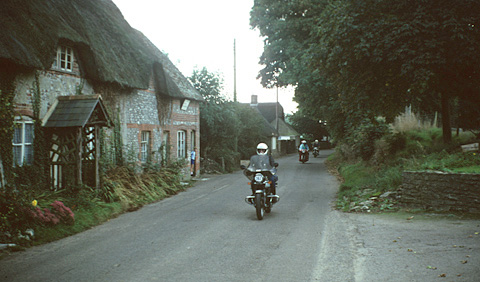
Chasing the bikes, we had no idea our direction from Salisbury and did not note the names of the tiny villages en route. This was simply a picturesque shot with an audience of one.
Italophiles in the Emerald Isles Too.
“Like old bikes?” Spoken in a thick brogue by an old gentleman in a well-worn tweed jacket fitted snugly over a much-loved cardigan sweater, checked shirt and necktie. He was standing next to an ancient, equally well-seasoned, open trailer containing a Clyno motorcycle.
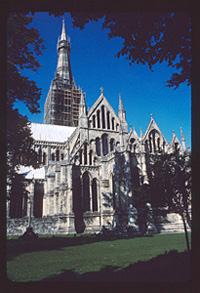
Salisbury cathedral was
begun in 1220 and is
described as the purest
example of early English
gothic. Its restoration has
been a, appropriately,
a “monumental” undertaking
We had come to see the Salisbury cathedral (being beautifully restored) en route to Stonehenge.
“We do. This the first Clyno I have ever seen.”
“Well, a bunch of old bikes are having a ride through the lanes to end at a pub for lunch. You’re welcome to follow along.”
Stonehenge will always be there. We were off to chase a bunch of old bikes through the lanes. It was a grand celebration of the princes of Serendip (a serendipity, for those of you unfamiliar with unplanned adventures of Ceylonese royalty). The Cranes tend to follow their lead. For about three hours we used all our borrowed Alfa 164 could offer and tested the ragged edges of my courage between the tall stone walls artfully disguised as hedges.
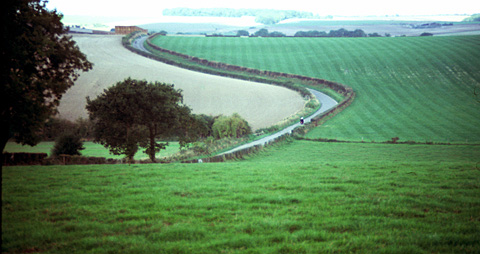
A clear look at the stone walls effectively disguised by ancient vines. The views were some of the best on our tour of England.
Oxfordshire offers some of the most romantic vistas and historic villages in England and we saw lots of both. We were late at the Poplar Inn, having stopped for pictures far too many times and followed what were apparently the slowest of the vintage motorbikes. The pub was long on beer and out of food. We spent an hour snapping the gathering and being awed by both the seasoned-formal riding kit and the old world manners of the assembled aficionados. There were a few Ducatis, a Guzzi and a few other European mounts among the sea of Brit bikes of the motoring century.
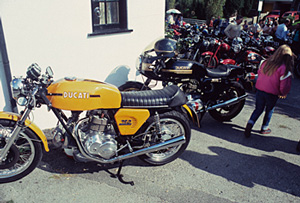
This brace of Ducatis was the marque’s
only representation, but a 750 Sport and
a 900 Super Sport are not a bad vision of
how Fabio Taglioni (Dr. T) made his mark..
But there were two stars of the show for me. One was the much oil-stained Indian in correct, original livery ridden in by a young man who had steadfastly refused to make it into an American overly-precious replica of what it should be. It started on the first kick then blasted off down the lane. The other was an attractive, young woman who rode in on her Brough Superior and when the event wound down, lit it with an almighty lunge of her 100-pound frame and thundered off in pursuit of the Indian.
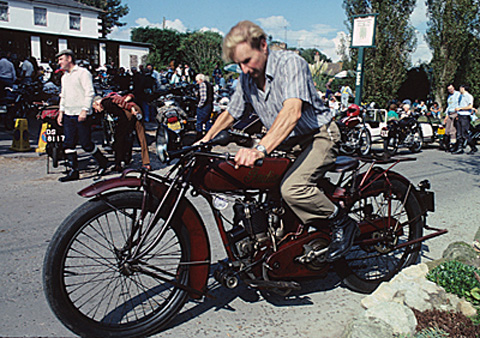
At the Poplar Inn gathering, an unrestored, though still effective, early teens Indian, still in its original “Crimson Steed of Steel” livery.
We had made our way to Oxfordshire after several days in country houses in the ancient and romantic environs of the Midlands and Cotswolds. After leaving the Isle of Man Steam Packet (now diesel ferry) we motored south to Oswestry and the 11th-century farm of Phil and Beth Llewellen for the Mrs’s gourmet fare and a dram [a small drink, not dynamic random access memory. ed.] of northern Scotland’s finest.
Late the next morning, nearly recovered, we continued south to Bromsgrove and Grafton Manor. An estate established by William the Conqueror when the Norman assumed the English thrown in December 1066 after his legendary victory at Hastings on October 14. A center of foment for centuries, while in the hands of the Talbots, Grafton might be most famous as the center of the “Gunpowder Plot” to blow up the Houses of Parliament. The plan failed when bomber Guy Fawkes was captured on Sunday November 3, 1605. The Brits continue to celebrate Guy Fawkes Day, even now. Our Italian connection arrives when Charles Talbot marries Adelhida, daughter of the Marquis Palleotti of Bologna–she famous for her courtly dalliances. Latin lovers enter from both sides of the bedroom.
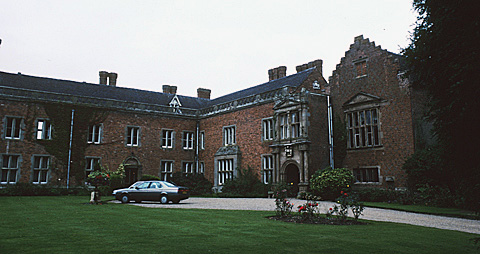
Much of England’s history was written in the lofty galleries of Grafton Manor. It was the seat of the vast Talbot family holdings and home of centuries of political and religious scheming — and later the Cranes.
A vital stop was the famous Falkland Arms pub with its vast inglenook fireplace. It is tucked away in Great Tew (no more than a dozen scattered buildings in the middle of nothing buy scenery). The Elizabethan village seems to have changed little in its 400 years. Most of the buildings retain their thatched roofs, including half of the Falkland Arms. Lucius Cary, Viscount Falkland inherited his village in 1631 at the age of 23 and… “so began the golden age of Great Tew”—all twelve buildings or her.
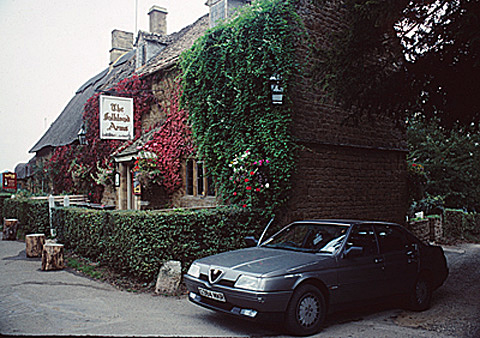
When the Llewellens suggested the Falklands Inn was the best historic pub in England, who’s to argue. The fireplace crackled, we were the only mid-day patrons and pub lunch was excellent.
And Bredon (long ‘e’) Manor stands out above several others in our memories. The area history reaches to the Druid sun worship on Bredon Hill, but the manor we visited was constructed in 1455 from an earlier monastery. It belonged to the Bishops of Worcester until the religious war of the 17th century deposed the bishops and it has been in private hands since that time. At least as impressive as the massive, if austere, house is the vast tithe barn that predates it.
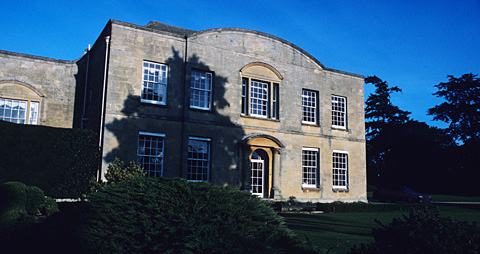
Bredon Manor is another “ancient pile” (as the Brits say) filled with history and managed by the gracious Whittinghams. “Bre” is celtic for hill and “dun” is the Anglo-Saxon word for the same thing. For us its meaning was quite different.
Important to us is the birth of our second daughter about three-quarters of a year after our stay in Bredon Manor. If you plan to visit, take shallow breaths and cold baths. Riding old motorcycles in the rain might also do the trick